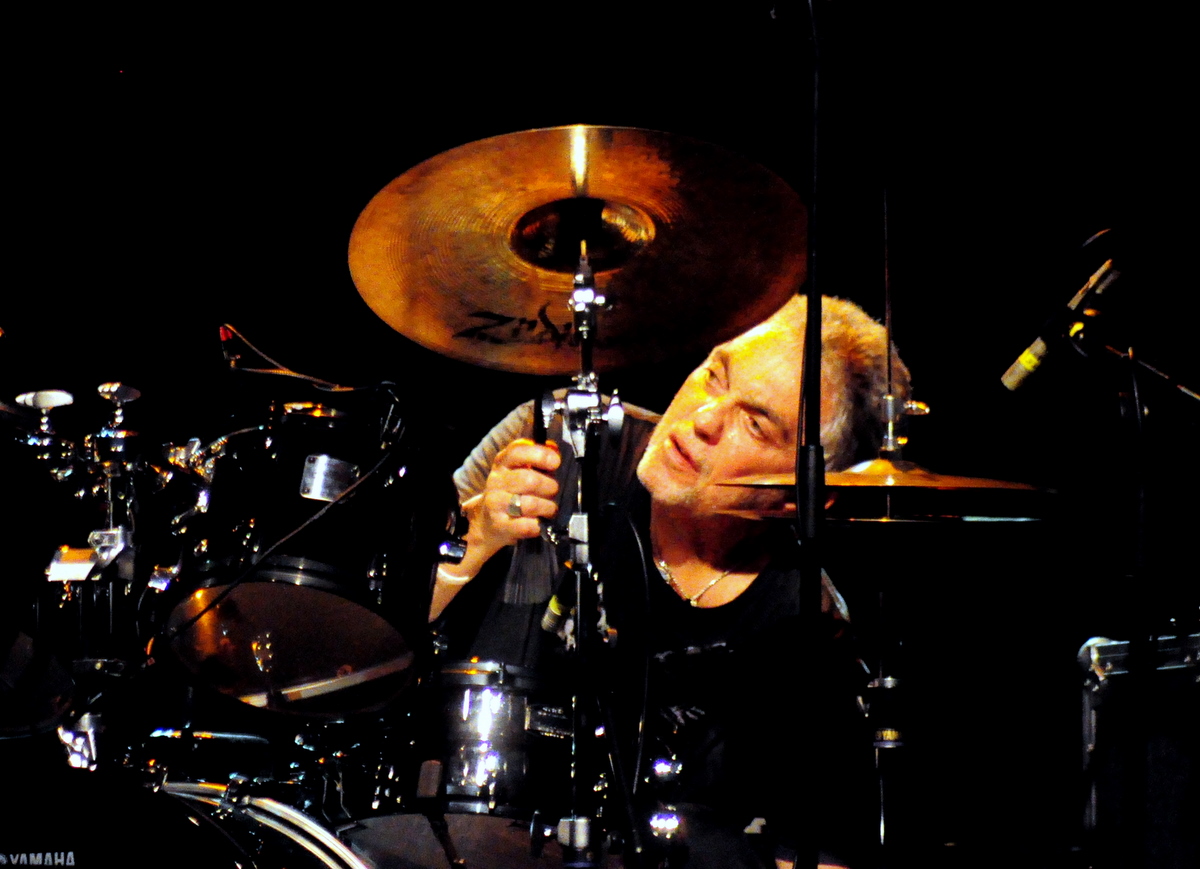|
Janis Ian (1978 Album)
''Janis Ian'', also titled ''Janis Ian II'' to avoid confusion with her debut album of the same name, is the tenth studio album by American singer-songwriter Janis Ian, originally released in 1978. Before the release of ''Janis Ian'', the singer had been spending most of her time touring Japan, where her previous studio albums ''Aftertones'' and ''Miracle Row'' had been much more successful than in the United States, where her early 1978 live album '' Remember...'' would never be issued. ''Janis Ian'' was recorded in late 1977 but not released until her return to the United States in the late summer of 1978, by which time she had been engaged and married to Portuguese novelist Tino Sargo. When ''Janis Ian'' was released, the singer was pleased, and the record at first appeared to be doing well. However, the early commercial promise of ''Janis Ian'' faded rapidly, and the album would continue a commercial decline in all territories, reaching only number 120 in the United States an ... [...More Info...] [...Related Items...] OR: [Wikipedia] [Google] [Baidu] |
Janis Ian
Janis Ian (born Janis Eddy Fink; April 7, 1951) is an American singer-songwriter who was most commercially successful in the 1960s and 1970s. Her signature songs are the 1966/67 hit "Society's Child, Society's Child (Baby I've Been Thinking)" and the 1975 Top Ten single "At Seventeen", from her seventh studio album ''Between the Lines (Janis Ian album), Between the Lines'', which in September 1975 reached No. 1 on the U.S. Billboard 200, ''Billboard'' 200 chart. Born in Farmingdale, New Jersey, Ian entered the American folk music scene while still a teenager in the mid-1960s. Most active musically in that decade and the 1970s, she has continued recording into the 21st century. She has won two Grammy Awards, the first in 1975 for "At Seventeen" and the second in 2013 for Best Spoken Word Album, for her autobiography, ''Society's Child'', with a total of ten nominations in eight different categories. Ian is a columnist and science fiction author. Early life Born in Farmingdale, N ... [...More Info...] [...Related Items...] OR: [Wikipedia] [Google] [Baidu] |
AllMusic
AllMusic (previously known as All-Music Guide and AMG) is an American online database, online music database. It catalogs more than three million album entries and 30 million tracks, as well as information on Musical artist, musicians and Musical ensemble, bands. Initiated in 1991, the database was first made available on the Internet in 1994. AllMusic is owned by RhythmOne. History AllMusic was launched as ''All-Music Guide'' by Michael Erlewine, a "compulsive archivist, noted astrologer, Buddhist scholar, and musician". He became interested in using computers for his astrological work in the mid-1970s and founded a software company, Matrix, in 1977. In the early 1990s, as compact discs (CDs) replaced LP record, LPs and cassette (format), cassettes as the dominant format for recorded music, Erlewine purchased what he thought was a CD of early recordings by Little Richard. After buying it, he discovered it was a "flaccid latter-day rehash". Frustrated with the labeling, he res ... [...More Info...] [...Related Items...] OR: [Wikipedia] [Google] [Baidu] |
1978 Albums
Events January * January 1 – Air India Flight 855, a Boeing 747 passenger jet, crashes off the coast of Bombay, killing 213. * January 5 – Bülent Ecevit, of CHP, forms the new government of Turkey (42nd government). * January 6 – The Holy Crown of Hungary (also known as Stephen of Hungary Crown) is returned to Hungary from the United States, where it was held since World War II. * January 10 – Pedro Joaquín Chamorro Cardenal, a critic of the Nicaraguan government, is assassinated; riots erupt against Somoza's government. * January 13 – Former American Vice President Hubert Humphrey, a Democrat, dies of cancer in Waverly, Minnesota, at the age of 66. * January 18 – The European Court of Human Rights finds the British government guilty of mistreating prisoners in Northern Ireland, but not guilty of torture. * January 22 – Ethiopia declares the ambassador of West Germany '' persona non grata''. * January 24 ** Soviet satellite Kosmos 954 burns up in Ea ... [...More Info...] [...Related Items...] OR: [Wikipedia] [Google] [Baidu] |
Janis Ian Albums
Janis may refer to: Film and music * ''Janis'' (film), a 1974 film about Janis Joplin ** ''Janis'' (1975 album), a compilation and the soundtrack album for the film ** ''Janis'' (1993 album), a Joplin career overview collection * "Janis", a track recorded by Focus on their 1971 album '' Focus II'' Fictional characters * Janis Gold, in the TV series ''24'' *Janis Day, in the comic strip ''Arlo and Janis'' *Janis Hawk, in the TV series ''FlashForward'' *Janis Ian, in the film ''Mean Girls'' *Janis (ジャニス, "Janisu"), in '' Inuyasha: Secret of the Divine Jewel'' People * Janis (given name) * Jānis, a Latvian masculine given name * Byron Janis (born 1928), American concert pianist (no relation to Conrad Janis) *Conrad Janis (1928–2022), American actor and jazz musician (no relation to Byron Janis) *Dorothy Janis (1912 –2010), American silent film actress *Elsie Janis (1889–1956), American musical theatre and vaudeville performer *Irving Janis, a social psychologist who ... [...More Info...] [...Related Items...] OR: [Wikipedia] [Google] [Baidu] |
Kent Music Report
The Kent Music Report was a weekly record chart of Australian music singles and albums which was compiled by music historian David Kent from May 1974 through to January 1999. The chart was re-branded the Australian Music Report (AMR) in July 1987. From June 1988, the Australian Recording Industry Association, which had been using the top 50 portion of the report under licence since mid-1983, chose to produce their own listing as the ARIA Charts. Before the Kent Report, ''Go-Set'' magazine published weekly Top 40 Singles from 1966, and albums chart from 1970 until the magazine's demise in August 1974. David Kent later published Australian charts from 1940 to 1973 in a retrospective fashion, using state by state chart data obtained from various Australian radio stations. Background Kent had spent a number of years previously working in the music industry at both EMI and Phonogram records and had developed the report initially as a hobby. The Kent Music Report was first releas ... [...More Info...] [...Related Items...] OR: [Wikipedia] [Google] [Baidu] |
Bass Trombone
The bass trombone (, ) is the bass instrument in the trombone family of brass instruments. Modern instruments are pitched in the same B♭ as the tenor trombone but with a larger bore, bell and mouthpiece to facilitate low register playing, and usually two brass instrument valve, valves to fill in the missing range immediately above the pedal tones. History The earliest bass trombones were pitched a minor third, perfect fourth, fourth, or perfect fifth, fifth below the tenor, which was then pitched in A.Due to the higher concert pitch#History of pitch standards in Western music, church pitch used throughout parts of Renaissance Europe, tenor trombones were usually described as pitched in A, even though they are a similar size to modern B♭ tenor trombones. The first position A = 466 Hz in high pitch produces the B♭ in the modern A440 (pitch standard), 440 Hz pitch standard. They had a smaller bore and less flared bell than modern instruments, and a longer slide with an att ... [...More Info...] [...Related Items...] OR: [Wikipedia] [Google] [Baidu] |
Baritone Saxophone
The baritone saxophone (sometimes abbreviated to "bari sax") is a member of the saxophone family of instruments, larger (and lower-pitched) than the tenor saxophone, but smaller (and higher-pitched) than the bass saxophone, bass. It is the lowest-pitched saxophone in common use — the bass, contrabass saxophone, contrabass and subcontrabass saxophone, subcontrabass saxophones are relatively uncommon. Like all saxophones, it is a single-reed instrument. It is commonly used in concert bands, chamber music, military bands, big bands, and jazz combos. It can also be found in other ensembles such as Rock music, rock bands and marching bands. Modern baritone saxophones are pitched in E. History The baritone saxophone was created in 1846 by the Belgian instrument maker Adolphe Sax as one of a family of 14 instruments. Sax believed these instruments would provide a useful tonal link between the woodwinds and brasses. The family was divided into two groups of seven saxophones each, ... [...More Info...] [...Related Items...] OR: [Wikipedia] [Google] [Baidu] |
Artie Kaplan
Artie Kaplan (born 1935) is an American recording artist, songwriter and a session musician. He has also been a music contractor where he was hired to musicians for sessions. In the 1960s, he was casting musicians for sessions for Aldon Music. When musician Joe Delia was asked about the best advice he had ever had, he said it was from Kaplan, who said "Always show up on time and bring a pencil." Background Kaplan is a singer-songwriter, producer and composer and the instruments he plays are saxophone, clarinet, flute and piccolo. His saxophone playing and solos can be heard on over 150 songs that made it to the top 10. The songs he has played on are " 1-2-3" by Len Barry, " The Locomotion" by Little Eva, " Mandy" by Barry Manilow, "Breaking Up is Hard to Do" by Neil Sedaka and " Sunday Will Never Be the Same" by Spanky & Our Gang. In 1972, he released an album with the title ''Confessions of a Male Chauvinist Pig''. In a studio news summary, ''Billboardss Sam Sutherland ref ... [...More Info...] [...Related Items...] OR: [Wikipedia] [Google] [Baidu] |
Steve Gadd
Stephen Kendall Gadd (born April 9, 1945) is an American jazz fusion drummer, percussionist, and session musician. Gadd is one of the best-known and most highly regarded session and studio drummers in the industry, recognized by his induction into the '' Modern Drummer'' Hall of Fame in 1984. Gadd's performances on Paul Simon's " 50 Ways to Leave Your Lover"(1976) and " Late in the Evening"(1980), Herbie Mann's "Hi-jack"(1975) and Steely Dan's " Aja"(1977) are examples of his style. He has worked with other popular musicians from many genres including Van McCoy, Simon & Garfunkel, James Taylor, Chick Corea, Chuck Mangione, Randy Crawford, Eric Clapton, Michel Petrucciani, and David Gilmour. Early life Gadd grew up in Irondequoit, New York. He started playing the drums at a very early age. At age 11, he entered the Mickey Mouse National Talent Round Up contest and was one of the winners; he won a trip to California, where he met Walt Disney and appeared on '' The Mickey Mouse ... [...More Info...] [...Related Items...] OR: [Wikipedia] [Google] [Baidu] |
Upright Bass
The double bass (), also known as the upright bass, the acoustic bass, the bull fiddle, or simply the bass, is the largest and lowest-pitched string instrument, chordophone in the modern orchestra, symphony orchestra (excluding rare additions such as the octobass). It has four or five strings, and its construction is in between that of the gamba and the violin family. The bass is a standard member of the orchestra's string section, along with violins, violas, and cellos,''The Orchestra: A User's Manual'' , Andrew Hugill with the Philharmonia Orchestra as well as the concert band, and is featured in Double bass concerto, concertos, solo, and chamber music in European classical music, Western classical music.Alfred Planyavsky [...More Info...] [...Related Items...] OR: [Wikipedia] [Google] [Baidu] |
Richard Davis (bassist)
Richard Davis (April 15, 1930 – September 6, 2023) was an American jazz bassist. Among his best-known contributions to the albums of others are Eric Dolphy's ''Out to Lunch!'', Andrew Hill's '' Point of Departure'', and Van Morrison's '' Astral Weeks'', of which critic Greil Marcus wrote (in ''The Rolling Stone Illustrated History of Rock and Roll''), "Richard Davis provided the greatest bass ever heard on a rock album." Early life Davis was born in Chicago, Illinois, on April 15, 1930. His mother died during childbirth, and he was raised by Robert and Elmora Johnson. Davis gravitated towards playing the bass, and began his musical career singing bass in his family's vocal trio. He studied double bass in high school under Walter Dyett, and was a member of the Youth Orchestra of Greater Chicago, playing in the orchestra's first performance at Chicago's Orchestra Hall on November 14, 1947. After high school, he studied double bass with Rudolf Fahsbender of the Chicago Sympho ... [...More Info...] [...Related Items...] OR: [Wikipedia] [Google] [Baidu] |
Wayne Andre
Wayne Andre (November 17, 1931 – August 26, 2003) was an American jazz trombonist, best known for his work as a session musician. Early life Wayne Andre was born November 17, 1931 in Manchester, ConnecticuAndre's father was a saxophonist, and he took private music lessons from age 15. Career He played with Charlie Spivak in the early 1950s before spending some time in the U.S. Air Force. In 1955 he joined the Sauter-Finegan Orchestra, and in 1956 played with Woody Herman. From 1956 to 1958 he played with Kai Winding and attended the Manhattan School of Music. He composed his "Nutcracker" and arranged "The Preacher" for the Kai Winding septet while performing with the septet. In the 1960s, he performed with Gerry Mulligan's first Concert Jazz Band, the Thad Jones/Mel Lewis orchestra, and Clark Terry's big band. He joined the "Mission to Russia" with Benny Goodman in 1962. He also played with Urbie Green, Art Farmer, Roy Ayres, and Carl Fontana. After settling ... [...More Info...] [...Related Items...] OR: [Wikipedia] [Google] [Baidu] |




